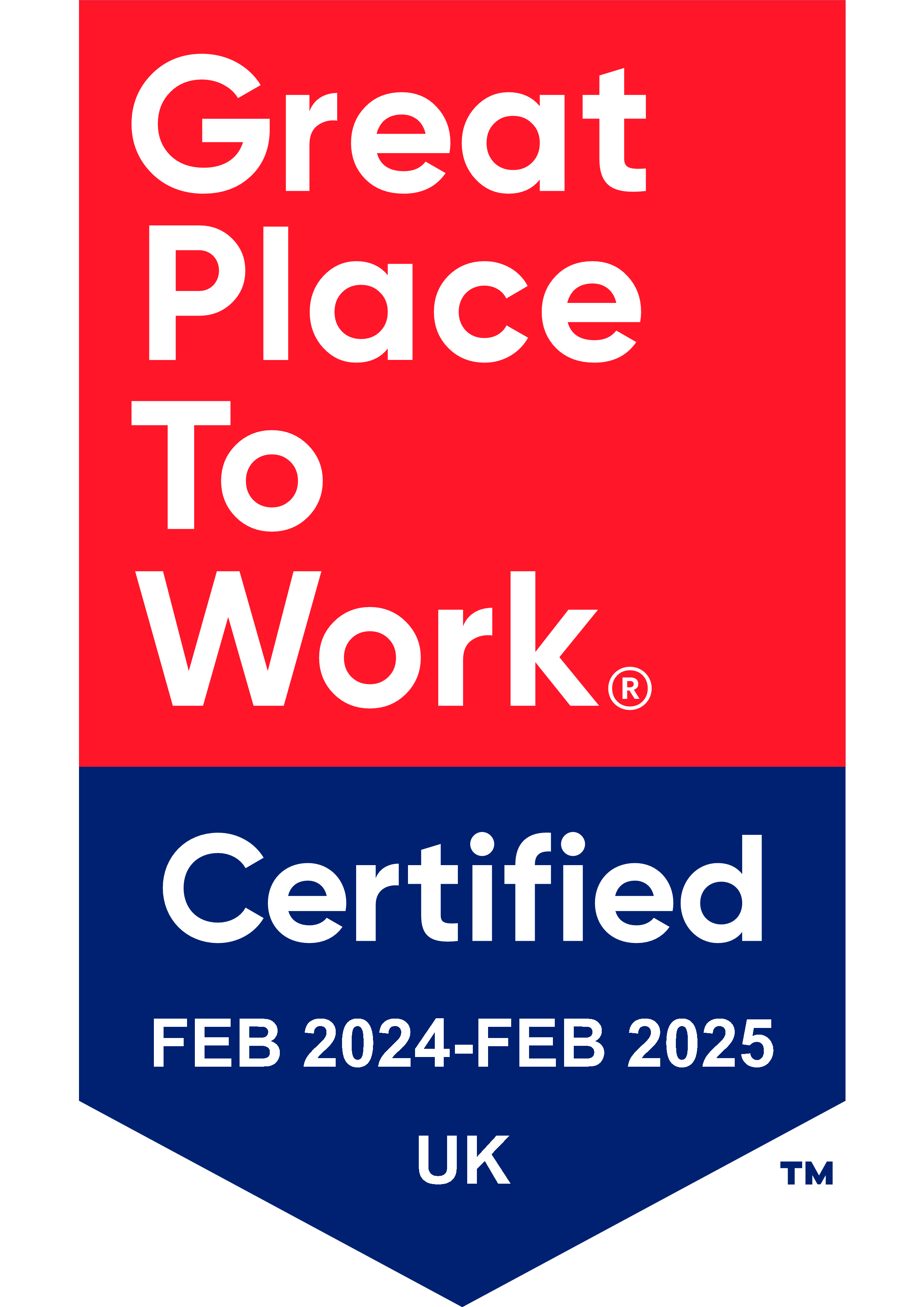Securing leads for your B2B SaaS business can be challenging, particularly in a crowded marketplace, where identifying effective lead generation channels is a time-consuming process. Making the wrong choice can drain your budget and slow down your growth.
Companies need to find a focused strategy instead of spreading resources across too many marketing channels.
This blog post will go through the best lead generation channels for B2B SaaS companies by comparing their ROI, timeline, and ideal scenarios.
Top SaaS Lead Generation Channels
1. Search Engine Optimisation (SEO)
SEO is a key SaaS lead generation channel. B2B decision-makers spend time researching products online before buying. Your position in search results matters.
SEO Key Features
75% of users never make it past the first page; this is why SaaS businesses need more than basic optimisation. Here's how you can attract prospects that convert:
- Technical optimisation: Search rankings rely on speed, Core Web Vitals, mobile-friendliness and structured data. Studies show that sites loading in 1 second convert 3x better than those that take 5.
- Strategic keyword targeting: Think of keywords as building blocks of your SEO strategy. You need to map them to each stage of your customer’s experience. Long-tail keywords attract more qualified visitors and usually deliver higher conversion rates.
- Content development: You need to create content that aligns with search intent and demonstrates your expertise, experience, authoritativeness, and trustworthiness (E-E-A-T).
- Link building: Your internal links should guide prospects through your funnel. Getting backlinks from trusted sites boosts your authority.
SEO Pros & Cons
Pros:
- Gives you amazing ROI (748%).
- Your results continue to grow over time, unlike paid channels.
- Establishes you as an authority in your industry.
- Cuts down acquisition costs once you rank well.
- Works at every stage of your funnel with targeted content.
Cons:
- Takes over 6 months to show results.
- You need to publish consistently.
- You need expert knowledge across multiple areas.
- Not right for every SaaS company, especially new startups finding their market fit.
SEO Pricing
SaaS companies typically allocate 5-10% of their revenue to SEO. Here's what different options usually cost:
- Monthly retainer: £1,290 - £6,880 monthly for most businesses. The price changes based on competition, how complex your website is, and what growth you want.
- Project-based: One-time SEO projects cost £860 - £3,440. This covers specific tasks, such as fixing technical issues or creating content.
- Hourly rates: Businesses pay £65 - £129 per hour for specialist SEO help.
- In-house vs agency: An in-house SEO expert costs around £4,205 monthly (without benefits). Most agencies charge around £2,535 monthly for a full team.
Your market competition, the needs of an international or local SEO, and your goals affect the price. Many SaaS companies find agencies to be more budget-friendly than building a team of their own.
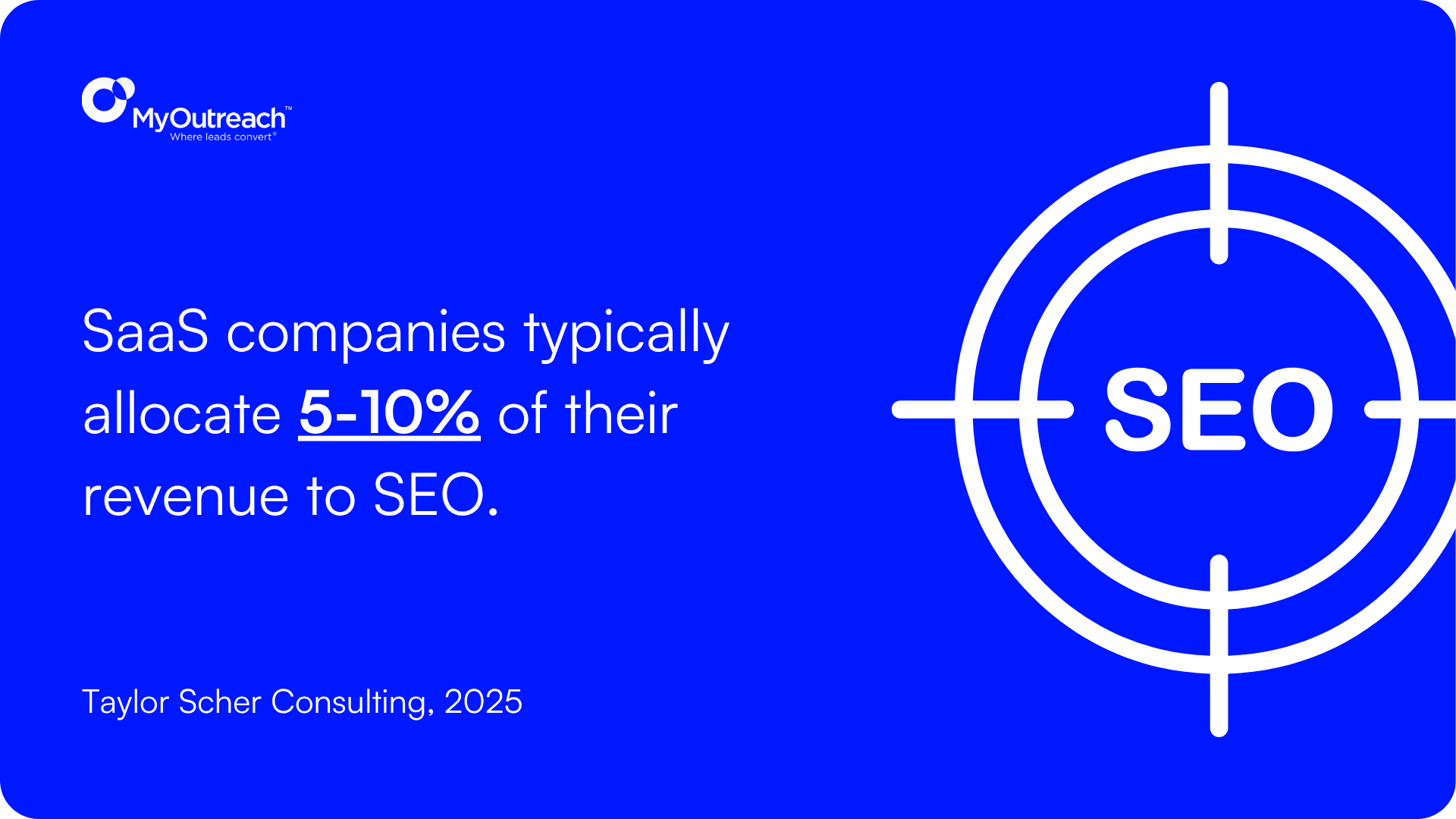
SEO Best Use Cases
SEO works best when it's aligned with how your customers search at different stages:
- Awareness stage: People don't know your product exists, but search for solutions to their problems. Target keywords like "team collaboration challenges" to educate them.
- Consideration stage: Visitors compare different options and need detailed comparisons. Use target phrases like "best project management software" to increase visibility and get on their radar.
- Decision stage: Prospects are ready to choose, but need reassurance. Focus on branded keywords and direct comparisons.
SEO is great for SaaS companies when:
- Your audience uses search engines to research (most B2B buyers do).
- You can create expert content consistently.
- You can wait 2+ years to see full results.
- Your market isn’t too competitive or too new to have search volume.
New startups that need quick results should try PPC first. A 2-month PPC campaign helps you test if Search works for you and collect keyword data.
SEO might not work well if you have a very niche product, aren't sure about your market fit, or need results in just a few months.
2. Pay-Per-Click Advertising (PPC)
PPC advertising gives businesses quick visibility to attract qualified leads. Over 84% of B2B marketers reported positive results from their PPC, but the top performers continually optimise. Let's explain why PPC is an important SaaS lead generation channel.
PPC Key Features
PPC advertising functions like a digital auction, where you only pay after someone clicks your ad. SaaS businesses find these core features valuable, especially when it comes to:
- Immediate visibility: PPC ads put your SaaS product right in front of potential customers who actively search for solutions. You don’t have to wait months like with organic strategies to see results.
- Precise targeting capabilities: Google Ads lets you personalise campaigns based on specific keywords, user behaviours, demographics, and more. SaaS companies can reach their ICP with amazing accuracy.
- Multi-platform options: Google Ads rules with 80% market share. However, platforms like AdRoll, Outbrain, Microsoft Ads, LinkedIn and Facebook are a great alternative.
- Retargeting functionality: PPC helps keep your brand visible to prospects while they make decisions. SaaS companies find this feature invaluable since customers often need multiple touchpoints before buying.
- Measurable performance: PPC platforms give you strong tracking and analytics tools. You can measure KPIs like impressions, clicks, conversions, and cost per conversion clearly.
PPC Pros & Cons
Pros:
- Immediate results: Your campaigns can go live within days. Test new offers, audiences, or locations quickly.
- Clear ROI measurement: PCC shows exact performance metrics. Track every click, conversion, and pound spent easily.
- High-intent traffic: Your ads reach people who are actively searching for solutions like yours.
- Scalability: Once you start getting profitable leads, increase the budget of the ads and keywords that work best.
- Testing ground for messages: SaaS companies can test different messages and targeting strategies economically.
Cons:
- Increasingly competitive: PPC gets more crowded each year. 96% of Google’s revenue is from Google Ads, which increases costs in competitive niches.
- Requires expertise: Running effective PPC campaigns needs a specialist with knowledge in keyword research, copywriting, and analytics.
- Ongoing management: Good PPC campaigns need consistent attention and tweaking.
- Potential for wasted budget: Poor targeting and optimisation can quickly drain marketing budgets with low-quality leads.
- Diminishing visibility: More internet-savvy users now avoid clicking paid results.
PPC Pricing
Industry, keywords, platforms and targeting affect PPC cost. Most businesses spend between £100 and £10,000 monthly on PPC advertising.
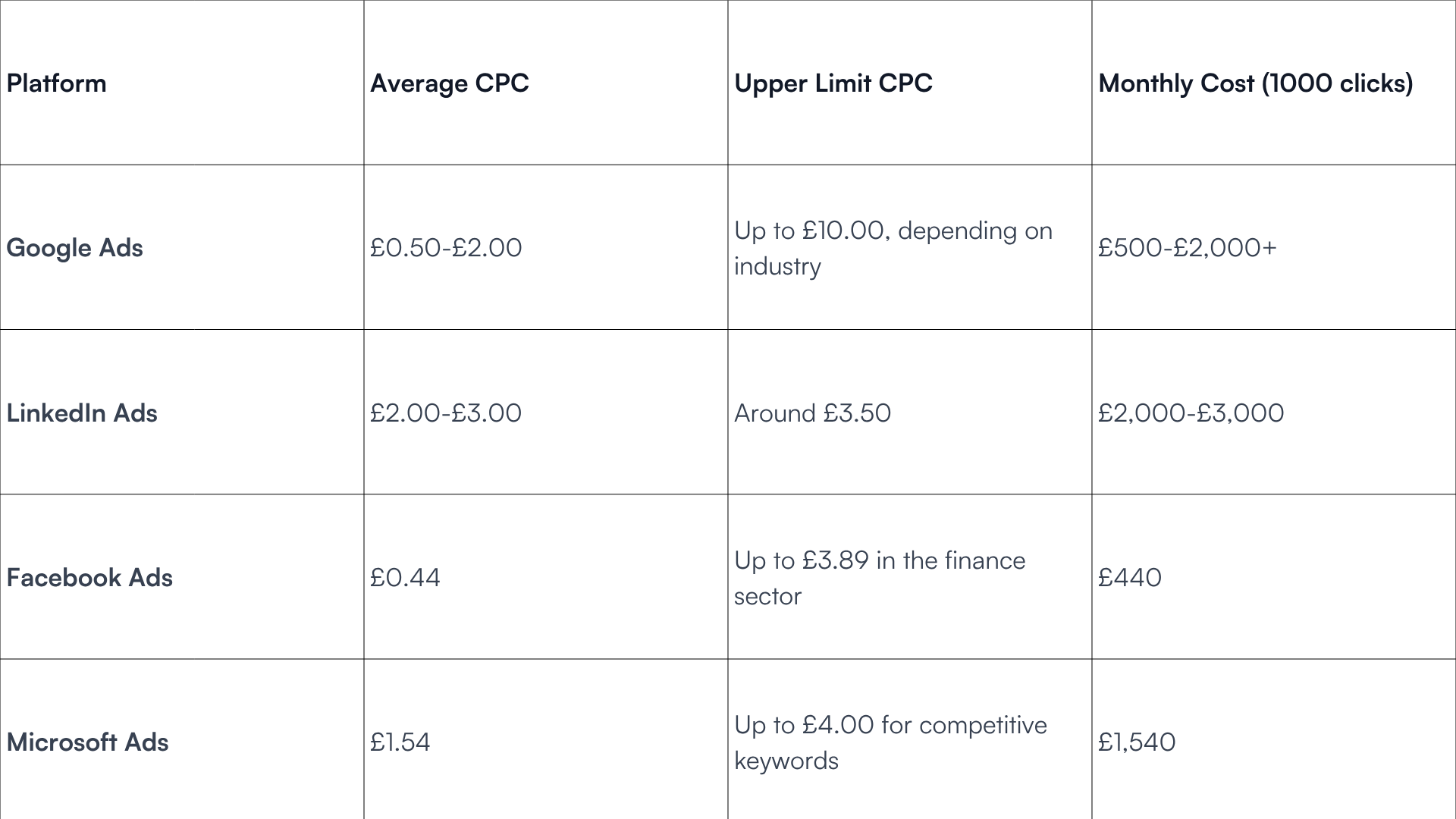
Extra costs you should think about:
- Agency fees: Usually 15-30% of monthly ad spend.
- In-house specialist: Average salary reaches £6,005 monthly (£72,071 yearly).
- Outsourced management: £2,500-£5,000 monthly (£30,000-£60,000 yearly).
PPC Best Use Case
PPC works best for SaaS companies in these situations:
By business stage:
- Pre-product/market fit (under £1M ARR): Keep budgets small at £5,000-15,000 monthly; focus on learning.
- Early growth (£1-10M ARR): Expand successful channels with £25,000-100,000 monthly.
- Scale stage (£10M+ ARR): Run multi-channel campaigns at £100,000-£500,000+ monthly.
By customer journey stage:
- Awareness: Show your solution to prospects searching for problem-solving methods.
- Consideration: Target comparison keywords as prospects evaluate options.
- Decision: Bid on competitor-branded terms during final selection.
PPC works hardest for:
- Service-based SaaS businesses with complex sales cycles.
- Companies that need quick visibility while building SEO presence.
- Testing market demand and messaging before investments.
- Businesses with high customer lifetime value that can afford acquisition costs.
Freemium models that need volume should focus on lower CPC keywords, wider targeting, stronger retargeting, and accept higher initial CAC.
The most successful SaaS PPC campaigns use dedicated landing pages that match their ad messages. Better landing pages improve quality scores, which leads to lower click costs and more conversions.
LinkedIn Advertising
LinkedIn is among the most powerful SaaS lead generation channels. The platform connects you with over 1 billion professionals worldwide who influence B2B purchasing decisions.
3. LinkedIn Advertising
LinkedIn is among the most powerful SaaS lead generation channels. The platform connects you with over 1 billion professionals worldwide who influence B2B purchasing decisions.
LinkedIn Ads Key Features
The LinkedIn advertising platform gives B2B SaaS companies excellent targeting precision:
- Professional demographic targeting: You can reach prospects based on job titles, company sizes, industry or even specific accounts. This precision helps B2B SaaS marketers to connect directly with decision-makers and budget holders.
- Advanced campaign management: LinkedIn Campaign Manager lets you set up ad accounts, connect the LinkedIn Insight Tag, and integrate CRMs like HubSpot or Salesforce. You can track pipeline metrics easily.
- Diverse ad formats: You can choose from multiple ad formats depending on your goal:
- Single image ads that build awareness and highlight features.
- Conversation ads with personalised CTAs.
- Carousel ads that showcase product features.
- Lead generation forms capture information without leaving LinkedIn.
- Expert opinion posts that position your brand.
- Matched audiences and retargeting: The platform lets you upload CRM lists, create retargeting sequences, and build lookalike audiences from high-converting segments. LinkedIn's Predictive Audiences feature also improves targeting through AI-driven modelling.

LinkedIn Ads Pros & Cons
Pros:
- Precision B2B targeting: This platform reaches niche audiences through job titles, industries, company sizes and specific technologies or certifications.
- Higher lead quality: LinkedIn delivers better-qualified leads for B2B SaaS despite higher costs.
- Effective for demand creation: Your SaaS solution can reach people who aren’t even actively searching.
- Native lead generation tools: Pre-filled lead forms on LinkedIn achieve 5x higher conversion rates than website conversions.
Cons:
- Higher costs: The platform costs more than others. CPCs range from £4.41 to £7.90 compared to Facebook’s £0.40 or Google’s £1.58 to £2.37 for B2B keywords.
- Slower audience growth: Small businesses and new brands need more time to build a larger following.
- Lower click-through rates: Ads on the platform see lower CTRs compared to other platforms.
- Limited ad formats: The platform offers professional-focused formats but lacks options available elsewhere.
- Potential client fraud: Reports show that up to 35% of ad clicks might come from bots, which doubles the real cost per legitimate click.
LinkedIn Ads Pricing
Professional audience targeting comes at a premium on LinkedIn:

SaaS companies should start with test budgets between £2,370 and £3,950 monthly. This will help gather enough data across audience segments, ad formats and funnel stages.
However, larger companies might have to spend more.
LinkedIn Ads Best Use Cases
These scenarios make LinkedIn advertising the most effective for SaaS companies:
- B2B SaaS with longer sales cycles: The platform is best at generating awareness and nurturing quality leads over time.
- High-value SaaS subscriptions: This platform is great for companies offering high-value subscriptions or enterprise solutions.
- Account-Based Marketing (ABM): Powerful targeting capabilities make precise ABM campaigns possible, reaching decision-makers in key accounts directly.
- Thought leadership and content marketing: Professional audiences respond well to whitepapers, case studies and webinars. Lead magnets solving immediate problems work better than direct sales pitches.
- Multi-stage funnel optimisation: Successful marketing campaign groups usually split their budget:
- 60% goes for cold prospecting/demand generation.
- 40% goes for retargeting.
Allocating your budget smartly can balance quick conversions with long-term brand building. Test different segments and move resources to high performers to make your budget worth spending. Start with clear objectives beyond brand awareness, and focus on free trials and demo requests that show direct engagement and clear conversion rates.
4. Email Marketing
Email marketing is a revenue powerhouse for SaaS businesses, despite being one of the oldest digital marketing tools. Know that every pound spent generates roughly £28 in ROI. This makes email marketing more valuable than other lead generation channels.
Email Marketing Key Features
SaaS companies can make the most of email marketing through these capabilities:
- Personalised customer trip mapping: You can guide prospects through their buying journey with personalised messaging. User-behaviour-based segmentation, along with purchase history, creates 6x higher transaction rates.
- Automated sequences: Your campaigns trigger based on how users interact with your platform. These include welcome series, onboarding sequences, trial campaigns and ways to bring interactive users.
- Lifecycle marketing: Moving prospects from awareness to conversion is where email marketing works best.
- Analytical insights: Your campaigns provide rich analytics about how subscribers behave and what they prefer. These metrics help you improve your marketing strategy in the long run.
- Multi-touchpoint integration: Email connects your other marketing channels. It reinforces messages from SEO, PPC, and social media efforts while pushing specific actions.
Email Marketing Pros & Cons
Pros:
- Superior ROI: Email marketing typically brings in the highest ROI, 3,600% to 4,000%.
- Direct audience access: Your messages directly land in prospects' inboxes without platform competition.
- Higher spending potential: Subscribers spend 138% more than non-subscribers.
- Affordable: Email needs less investment than paid advertising or direct mail.
- Relationship building: regular, valuable communication builds trust and loyalty, which leads to better customer retention.
Cons:
- Resource demands: Great email campaigns need a solid strategy and regular content creation.
- Time investment: Getting the best results means regular testing and analytics review.
- Deliverability challenges: Emails will likely end up in spam without proper management.
- List maintenance: You need to clean up weekly to remove duplicates or invalid contacts.
- Audience limitations: Targeting specific groups through segmentation naturally limits your reach.
Email Marketing Pricing
Pricing for email campaigns usually depends on your approach and campaign complexity:
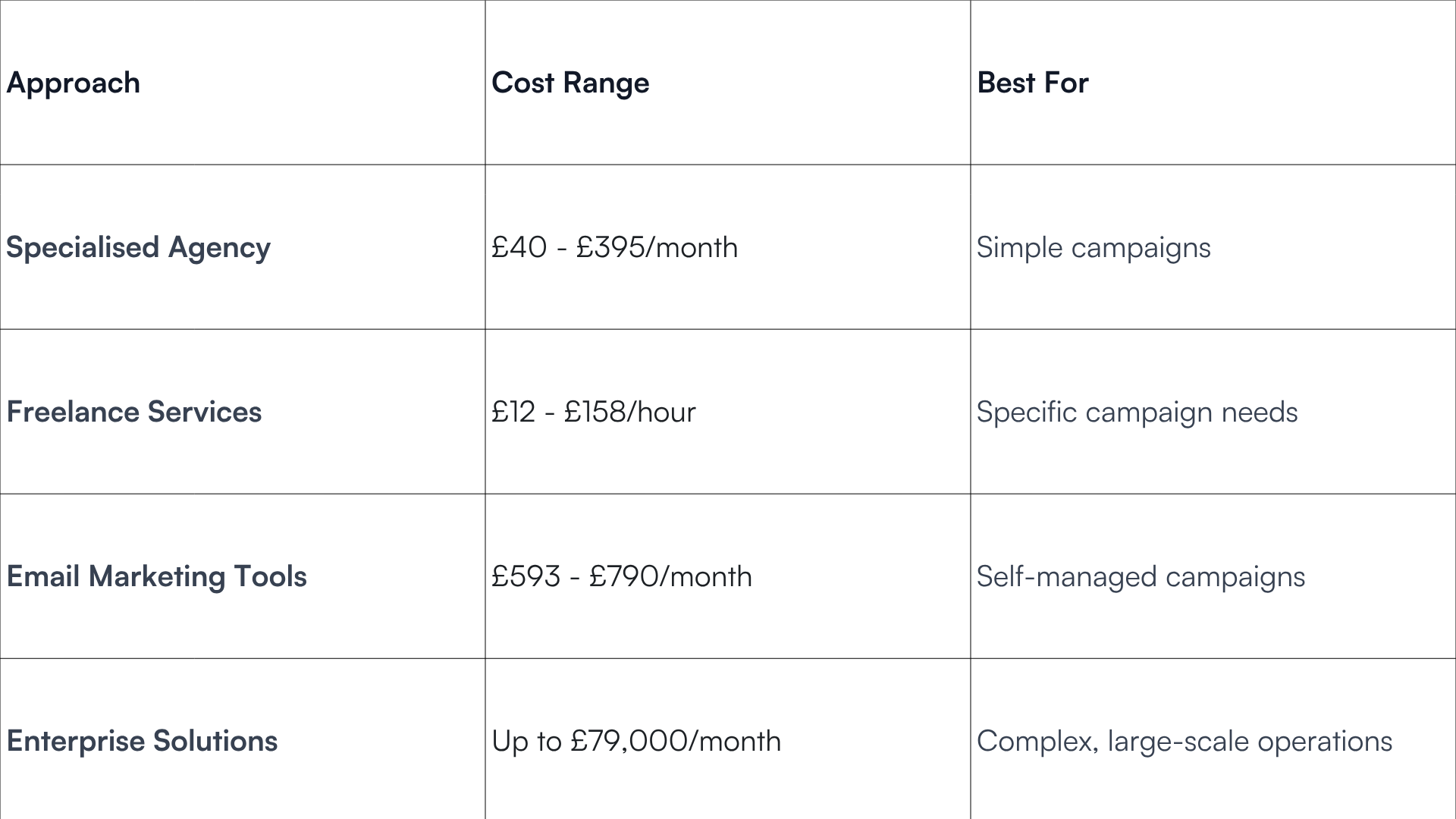
Most companies spend between £40 and £395 monthly on email marketing tools.
New SaaS businesses can start with MailChimp’s free plan that supports 2,000 contacts.
Email Marketing Best Use Cases
SaaS companies get the best results from email marketing in these scenarios:
- Customer onboarding: Detailed onboarding sequences build value and trust right after signups. Users learn the setup quickly and discover "quick win" features, which reduce churn.
- Feature adaptation campaigns: Users get timely reminders to try new features based on their usage patterns.
- Subscription renewal management: Starting conversations 30 to 90 days before renewal helps avoid billing surprises. It shows ROI and usage stats that make renewals feel like opportunities.
- Cross-funnel nurturing: Long SaaS sales cycles work well with email - they focus on education and proof for multiple stakeholders.
- Expansion revenue generation: Freemium models benefit from upsell emails that show premium features as solutions to bigger problems.
Email marketing fits SaaS businesses perfectly because subscription models need consistent communication. SaaS applications generate rich data that helps you create personalised and relevant messages that other industries can't match.
The best results come when SaaS companies match email campaigns to customer lifecycle stages.
5. Webinars & Virtual Events
Another key SaaS lead generation channel is webinars. They let companies directly connect with prospects while showing their expertise. About 85% of B2B marketers consider webinars as part of their marketing strategy.
Webinar Key Features
Successful webinars use several unique elements to generate leads:
- Interactive engagement tools: Live Q&As, polls, surveys, and chat features create two-way conversations with prospects.
- Lead qualification mechanism: People spend more time watching a webinar than reading a blog; this filters out higher-quality leads.
- Immersive digital experience: Live interaction keeps audiences interested instead of passive reading.
- Segmentation capabilities: Lead scoring systems give value to different engagement actions. This makes audience segmentation and follow-ups easier.
- Trust-building showcase: Webinars build credibility. Teams can show their expertise, share valuable insights and solve common industry problems.

Webinars Pros & Cons
Pros:
- Higher-quality leads: Webinar participants usually show stronger buying intent than other channels.
- Cost efficiency: Without physical venues, webinars easily become more budget-friendly compared to face-to-face events.
- Deeper audience engagement: Teams can interact longer with audiences compared to other content types.
- Wide potential: Teams can automate and reuse recordings long after the event ends.
Cons:
- Resource-intensive: Teams have to plan, rehearse, and prepare technically for successful webinars.
- Technical challenges: Platform issues, audio problems or bad connections can ruin well-planned webinars.
- Attendance fluctuations: Only 40% of registered individuals actually join.
- Follow-up demands: Lead opportunities fade quickly without proper post-webinar strategies.
- Equipment costs: Quality microphones, cameras and lighting need extra investment.
Webinar Pricing
Costs change, and they are based on size, frequency and platform choice:
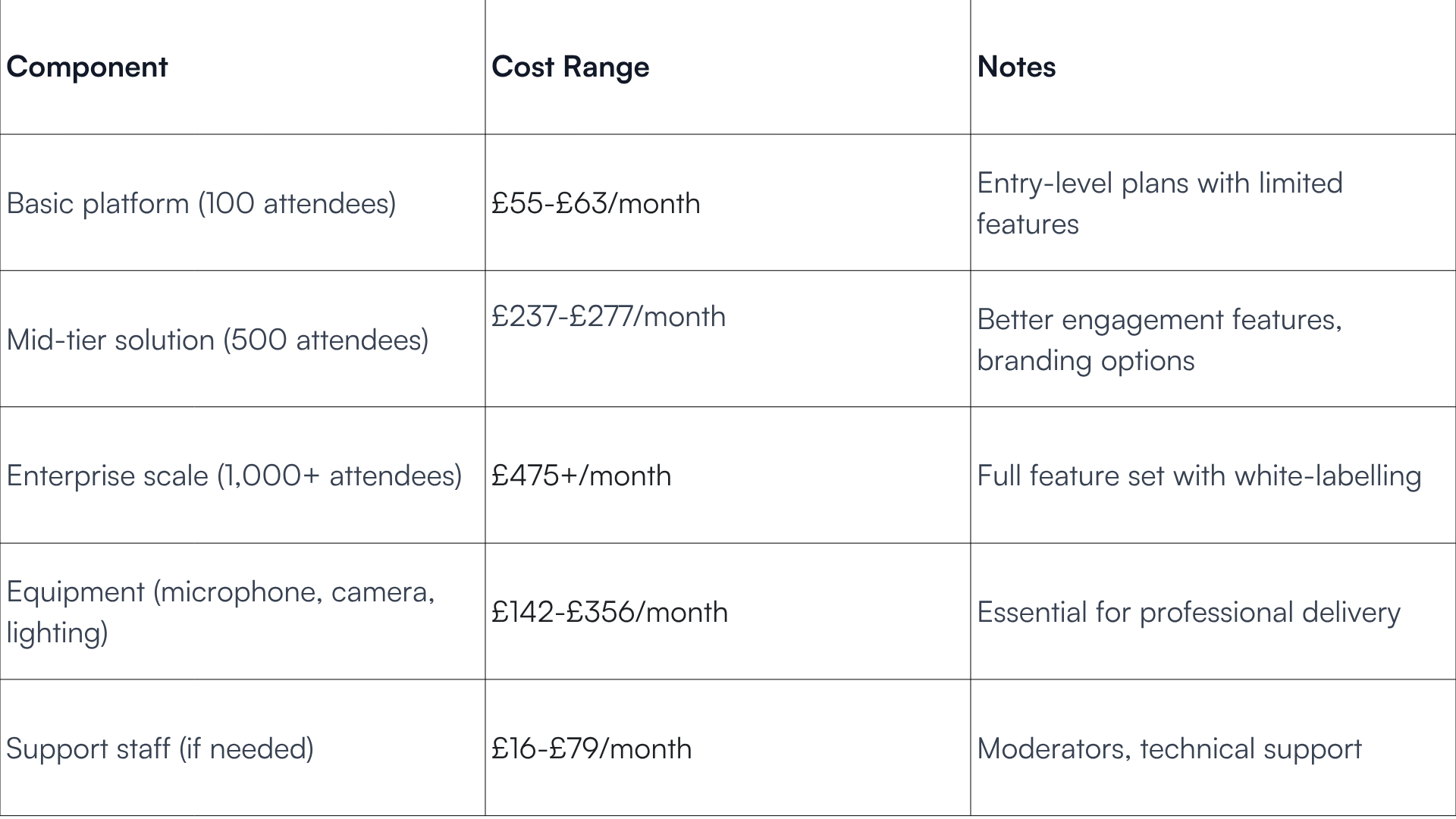
Pay-per-use models work better for one-off webinars instead of subscriptions.
Webinar Best Use Cases
Webinars shine as lead generation channels in specific situations:
- Qualifying multiple prospects: Unlike individual sales calls, teams can qualify multiple prospects at once.
- Demonstrating complex SaaS products: Teams can showcase features deeply and answer questions live.
- Account-based marketing: Content can target specific companies and their unique challenges.
- Multi-stage final optimisation: Webinars work throughout the funnel.
- Post-sale onboarding: New users learn product capabilities and best practices, which reduces churn.
Conclusion
Choosing the right SaaS lead generation channels is about strategy. SEO builds long-term ROI, PPC brings instant visibility, LinkedIn Ads reach decision-makers, email marketing drives powerful ROI, and webinars convert engaged audiences. The best SaaS growth plans combine these channels continuously, resting and improving based on ROI.
SaaS Lead Generation Channels with MyOutreach
MyOutreach helps SaaS companies master SaaS lead generation channels through smart, data-driven strategies. We connect your brand with decision-makers highly likely to convert.
Whether you’re looking to scale fast or build steady, we will turn your marketing channels into consistent, high-quality lead engines. Let’s talk!
FAQs
Q1. How do I determine which lead generation channels to prioritise for my SaaS business?
To prioritise lead generation channels, consider your business stage, target audience, and available resources. Evaluate each channel's ROI, time to results, and alignment with your goals.
Q2. What are the key advantages of using email marketing for SaaS lead generation? Email marketing offers several advantages for SaaS lead generation, including superior ROI, direct audience access, cost-effectiveness, and the ability to build long-term relationships.
Q3. How effective are webinars for generating high-quality SaaS leads?
Webinars are highly effective for generating quality SaaS leads. They excel at qualifying multiple prospects, demonstrating complex products, and building trust through direct interaction.
Q4. What are the main differences between SEO and PPC for SaaS lead generation? SEO offers long-term, compounding growth with a high ROI (748%) but requires consistent content creation and patience. However, PPC, on the other hand, provides immediate visibility and precise targeting but at a higher cost. SEO establishes brand authority over time, while PPC allows for quick testing of messaging and audiences. The choice depends on your budget, timeline, and specific business goals.
Q5. How can LinkedIn advertising benefit B2B SaaS companies in particular?
LinkedIn advertising is particularly beneficial for B2B SaaS companies due to its precise professional targeting capabilities. It allows you to reach decision-makers based on job titles, company size, and industry. While more expensive than other platforms, LinkedIn often delivers higher-quality leads for B2B SaaS.



.png)
.png)
.png)





